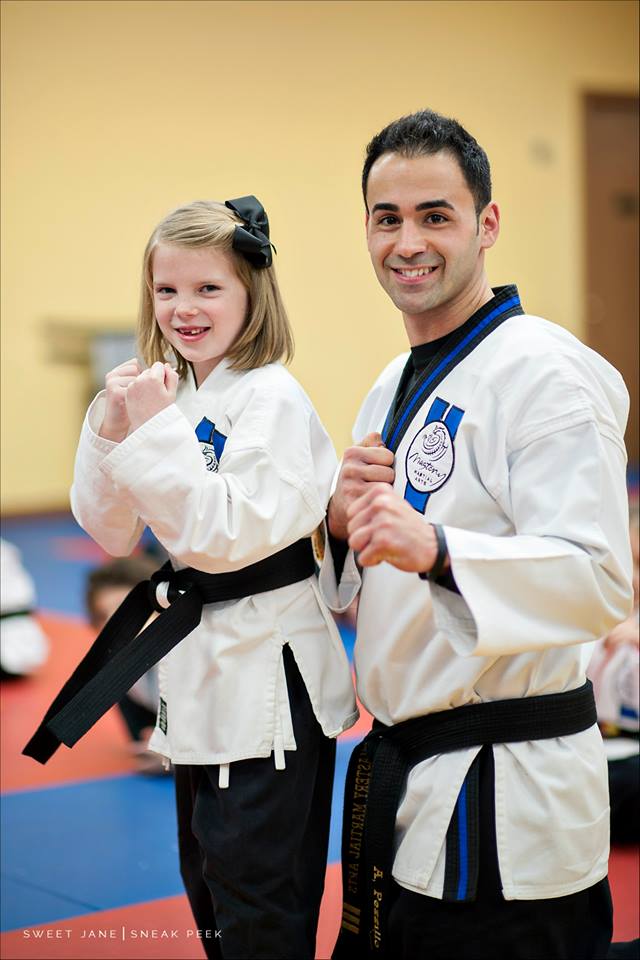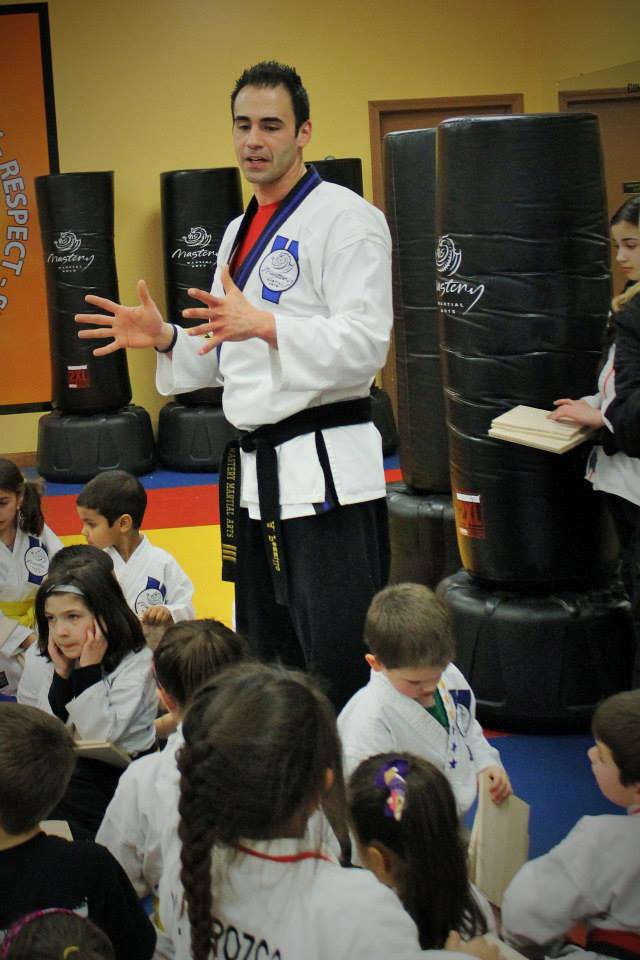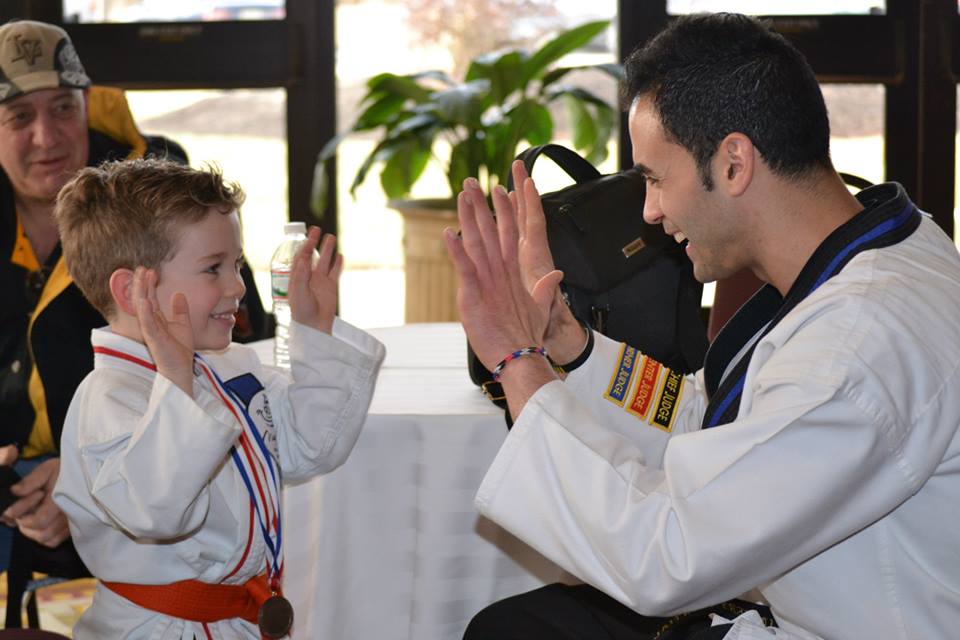 When considering a physical activity for themselves or their family members with a bleeding disorder, many people overlook the possibility of martial arts. Martial arts can be defined as any of the traditional forms of Oriental self-defense or combat that utilize physical skill and coordination without weapons, such as karate, aikido, judo, or Kung Fu, often practiced as a sport.¹
When considering a physical activity for themselves or their family members with a bleeding disorder, many people overlook the possibility of martial arts. Martial arts can be defined as any of the traditional forms of Oriental self-defense or combat that utilize physical skill and coordination without weapons, such as karate, aikido, judo, or Kung Fu, often practiced as a sport.¹
Martial arts are often depicted as high contact, high intensity activities. While there are certain forms of martial arts that do use sparring and contact, many do not. The National Hemophilia Foundation ranks martial arts (Karate, Kung Fu, Taekwondo) as a moderate-dangerous sport for individuals with bleeding disorders.²
It is a sport that can be considered for its many benefits beyond building muscle tone, flexibility and general health. The practice of martial arts also builds emotional health. Some of the biggest benefits that come from practicing any of the martial arts are: self-esteem and self-confidence, self-control, responsibility, respect and most importantly fun!
It is important for anyone considering martial arts to become educated about the practice and to do their research to find a qualified instructor and a program that is safe and right for their needs. Of course, it is always a must to consult with your physician, physical therapist or HTC before beginning any physical activity or exercise program.
There are many individuals in the community who are finding strength, health and success in a martial arts program. One of those people is Anthony Pezzillo, who has moderate hemophilia. Anthony is the Chief Instructor at Mastery Martial Arts in Rhode Island where he teaches daily classes to over 500 students and is known as, Mr. Pezzillo. Anthony has been practicing Taekwondo for the last 15 years and currently has his third-degree black belt. Anthony recently held a board breaking fundraiser with his students for Helping Hands, a program that provides temporary financial assistance for those living with a bleeding disorder.
Here is a list of questions you may want to consider asking before enrolling in a martial arts program and answers that Mr. Pezzillo provided for us about his program and what you might expect or want to hear when considering enrolling an individual with a bleeding disorder in a martial arts program.
1.  What medical training does the staff have? (i.e. CPR, blood borne safety, first aid, etc.)
AP:Â First Aid & CPR
2. What overall training does the staff have?
AP: All of the instructors have been training in martial arts for over 10 years and have to go through three levels of instructor certification in order to be qualified to teach. That is a total of 400 hours teaching.
3. Can I sit down with the staff before me or my child starts to do an overview of the bleeding disorder?
AP: If you are considering martial arts, we encourage you to sit down with the chief instructor to go over any concerns and health conditions the student may have. Martial arts is not a one mold fits all, it should be customizable to the individual person and condition.
4.  Is there physical contact, either student to student or student to staff?
AP: We refer to it as proper correction. If a student is not using the right form, we help them reposition their body to understand what the position is. Sparring is an option at our academy, however it is not mandatory and nobody is forced to partake in it.
5.  How do you avoid getting hurt practicing martial arts? Is there protective equipment?
AP: All students are required to have safety equipment before beginning martial arts. We go over what this means with all new students to make sure everyone is on the same page. If I know that I am going to be doing anything that may cause a bleed (sparring, tournament, extreme contact) I always infuse beforehand.
6.  Is there physical contact with breaking boards or other items?
AP: Every class we do board breaking to help build confidence and self-esteem. They are safety boards and we encourage students to do it. However, if someone doesn’t want to do it, they don’t have to.
7.  What is the cost of the classes/equipment?
AP: It really depends on the school, state, and how often the student wants to train. To give an example, $30 will get you two classes a week at our academy.
8.  How could you accommodate/include my child if he/she has a bleed? What about pro-rating tuition if my child is unable to attend for a majority of a month?
AP: If a child misses classes due to illness, we can work with the parent and family to make up those classes at a later date so that nothing is lost. If something were to happen during class to a student who has a medical condition like hemophilia, we first and foremost use RICE. We have ace bandages and ice at the studio and would apply that directly to the affected area. If a parent was not present, we would immediately call them if a bleed was suspected. We also encourage all students to bring their medication with them to each class. If a student has hemophilia we would ask them to have a dose of factor with them while they are training.
9.  Can I stay to watch my child?
AP: Yes, we encourage that.
10. Are there certain forms of martial arts that are safer than others?
AP: Yes, Taekwondo is the most common type of martial arts and we can mold it to fit anyone’s lifestyle. You probably want to stay away from mixed martial arts which is high contact and intensity and may cause a bleed.
11. At what age can my child begin taking classes?
AP: Any age is a good age to start. Studies have found that ages 1-6 is when children develop important behavior tendencies that can affect the rest of their lives. For a child we encourage them to start between the ages of 3-5.
12. Am I able to observe a class or two before committing to the class?
AP: Yes, we offer all of our new members a free introductory lesson. This way, you can view a class and also get a private lesson with one of the certified instructors.
__________________________________________________
1 http://dictionary.reference.com/browse/martial+arts
2Â http://www.hemophilia.org/NHFWeb/Resource/StaticPages/menu0/menu2/menu35/menu204/PlayingItSafe.pdf
*While extensive efforts are made to ensure accuracy of the content of each FitFactor post, these entries are not intended to be construed as medical advice or the official opinion/position of HFA, its staff, or its Board of Directors. Readers are strongly encouraged to discuss their own medical treatment with their healthcare providers.
Â




